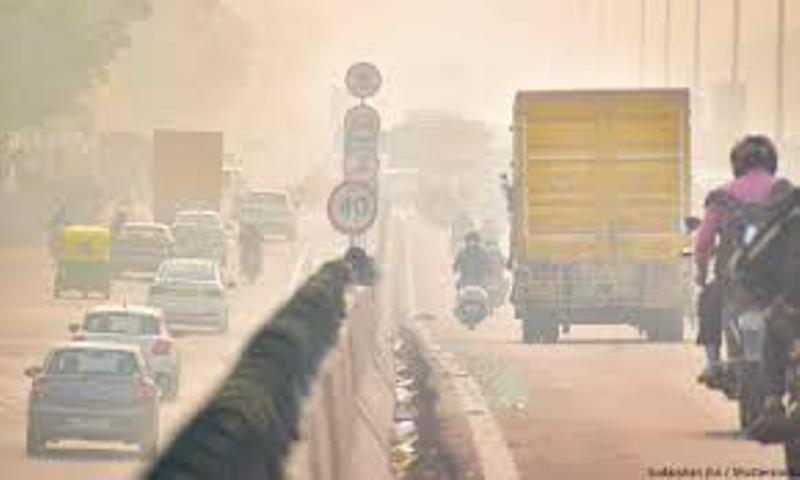By Shivang Agarwal & Suresh Ramasubramanya Iyer
Despite a growing number of initiatives generating momentum for improving air quality, meeting the World Health Organization’s air quality guidelines remains a steep climb for India.
India launched its Air Quality Index (AQI) on September 17, 2014 offering a simple numerical scale to communicate air quality and its health impacts.
While the initiative marked a significant step forward, debates continue over the AQI’s formulation, highlighting a need for stronger scientific leadership.
Around the same period, China was battling a similar air quality crisis. While China moved decisively, India faltered — not for lack of scientific understanding, but due to insufficient political will.
The launch of the National Clean Air Programme (NCAP) in 2019 was a moment of renewed hope. It aimed to cut particulate pollution by 20–30 percent by 2024 (from 2017 levels), later revised to a more ambitious 40 percent reduction by 2026.
Think tanks, academic institutions, and civil society rallied behind the mission, and statutory bodies like the Commission for Air Quality Management (CAQM) were created to drive coordinated action in the National Capital Region.
Despite this institutional push, however, significant and consistent improvements in air quality remain elusive nationwide.
Comprehensive studies are critical for evaluating policy scenarios and understanding how different interventions influence pollution dynamics. In this context, advanced air quality modelling has emerged as a powerful decision-support tool.
Modelling studies
High performance air quality models help answer fundamental questions about the sources of pollution in a city, pollution from primary emissions versus secondary chemical formation, and local pollution versus that transported from outside.
Such models enable policymakers to evaluate whether specific interventions — like the shift from BS-IV to BS-VI fuel standards or large-scale initiatives such as the Pradhan Mantri Ujjwala Yojana (PMUY) (which received an initial investment of ₹800 billion (US$9,300 million)) — are likely to produce measurable improvements in air quality, and where those benefits are most likely to be seen.
A study published in a leading international journal, for example, underscores the gravity of the air pollution crisis in the Indo-Gangetic Plain — one of the world’s most densely populated and polluted regions. Annual average PM2.5 concentrations consistently exceed 80 μg/m³, with winter peaks surging to between 150 and 230 μg/m³ — far above safe limits.
According to WHO guidelines, the annual average for PM2.5 should not exceed 5 µg/m³, and 24-hour concentrations should remain below 15 µg/m³ on all but 3–4 days in a year. For PM10, the corresponding limits are 15 µg/m³ annually and 45 µg/m³ in a day.
Tackling air pollution in the Indo-Gangetic Plain demands integrated, regional strategies based on the idea of “airsheds” – analogous to watersheds – that extend well beyond local emissions control.
These elevated levels are not driven by local emissions alone. Two major factors contribute to the severity of winter pollution:
First, the region experiences a nearly fivefold drop in its ventilation coefficient – a measure of how well the air in a region can “clean itself” by moving and spreading out pollution.
In winter, still air, especially in mountain-ringed areas like the Himalayas — traps pollutants near the ground, worsening air quality.
Second, a significant share of secondary PM2.5 forms from precursor gases transported from neighbouring areas.
Natural phenomena like temperature inversions, low wind speeds, and the topographical trapping of pollutants often intensify winter pollution levels.
Tackling this complex issue demands more than blanket solutions; it requires a nuanced understanding of where air pollution originates, and how it evolves.
It is made all the more difficult by geographical diversity, economic pressures, and cross-border pollution
Scientific assessments suggest that primary emissions account for roughly 38 percent of PM2.5, while secondary formation, driven by chemical reactions in the atmosphere, contributes about 62 percent.
Biomass burning in the domestic sector is the dominant source of primary particulates, whereas secondary pollutants are largely influenced by industrial processes, power generation and cross-border transport.
Another series of studies conducted for various state governments suggest that without bold, transformative action, India is unlikely to ever meet the air quality guidelines of the WHO.
Studies comparing business-as-usual and “most ambitious” intervention scenarios in cities show that even aggressive policies fall short of the WHO benchmarks.
These findings emphasise the magnitude of change required — not incremental tweaks, but systemic shifts in energy use, transport, industry, and waste management.
Systemic shifts and solutions
As scientific and policy discussions around air pollution solutions continue, meaningful implementation ultimately hinges on political will. While evaluating political priorities falls outside the scope of this article, one recent scientific insight offers a practical adjustment that could greatly enhance existing policy.
The study proposes a shift in how India approaches air quality management: by dividing the country into nine to 11 regional airsheds, each defined by its unique meteorological and topographical characteristics.
Under the current framework of the National Clean Air Programme (NCAP), 130 non-attainment cities are individually responsible for meeting pollution reduction targets. However, air pollution doesn’t respect municipal or state boundaries — it moves with the wind. This phenomenon, known as transboundary pollution, often renders city-specific plans ineffective.
The airshed-based approach groups cities that share similar wind and pollution patterns, enabling more coordinated and scientifically grounded interventions. For example, the study shows that Delhi’s airshed boundaries shift seasonally. In summer, easterly winds carry pollution from Uttar Pradesh into the capital, while in winter, westerly winds bring pollutants from Haryana.
Delhi’s clean air efforts could be bolstered by coordinated action with neighbouring cities like Noida, Ghaziabad, and Meerut.
This pattern repeats across India. In Chennai, winter winds transport pollution from inland Tamil Nadu to the coastal city. Mumbai experiences landward pollution flow from industrial zones seasonally.
Even relatively cleaner cities like Bengaluru are impacted by emissions drifting in from nearby regions.
Overcoming implementation hurdles
The message is clear: managing air quality by airshed, not by administrative boundaries, is essential for any realistic and science-driven path toward cleaner air in India.
While scientific understanding of India’s air pollution crisis has grown substantially in recent years, converting this knowledge into actionable policy continues to be a major hurdle. Implementing an effective airshed-based strategy would require a significant shift in the country’s current approach.
Specifically, it would involve:
- Restructuring the National Clean Air Programme (NCAP) to prioritize airshed-level planning, moving beyond city-specific targets.
- Establishing robust interstate coordination, especially for cross-jurisdictional airsheds
- Expanding regulatory efforts to include precursor gases, which play a critical role in the formation of secondary PM2.5.
- Developing integrated air quality monitoring systems capable of tracking both primary emissions and the complex chemistry behind secondary pollutant formation.
Whether India can achieve the air quality levels recommended by the World Health Organization (WHO) is not only a scientific question — it is equally a matter of governance and policy commitment.
Shivang Agarwal is Technical Fellow,Institute for Governance & Sustainable Development (IGSD), Washington DC. Suresh Ramasubramanya Iyer is Senior Fellow and Area Convenor, Centre for Air Quality Research, The Energy and Resources Institute (TERI), New Delhi.
Originally published under Creative Commons Attribution 4.0 by 360info™.















